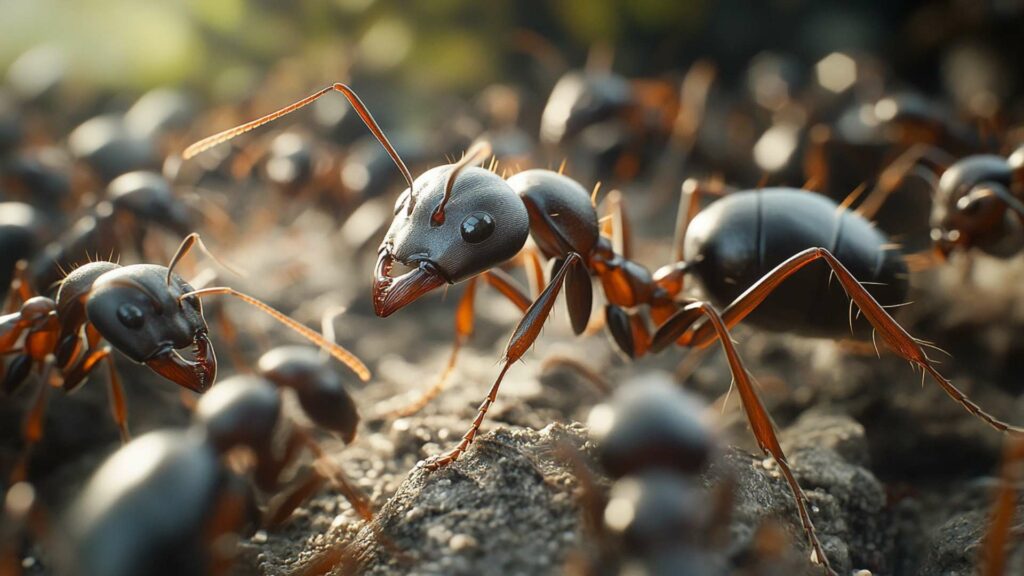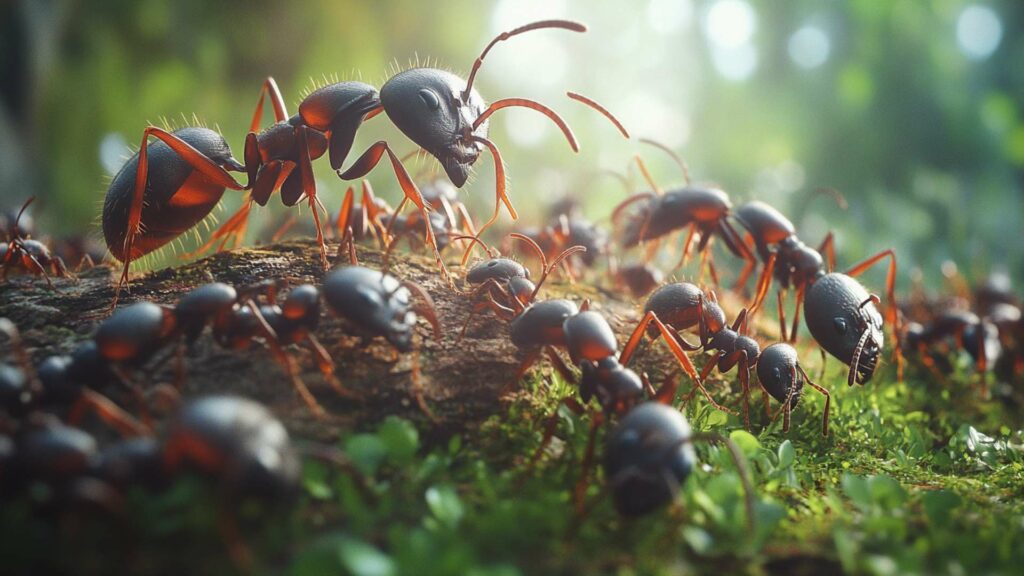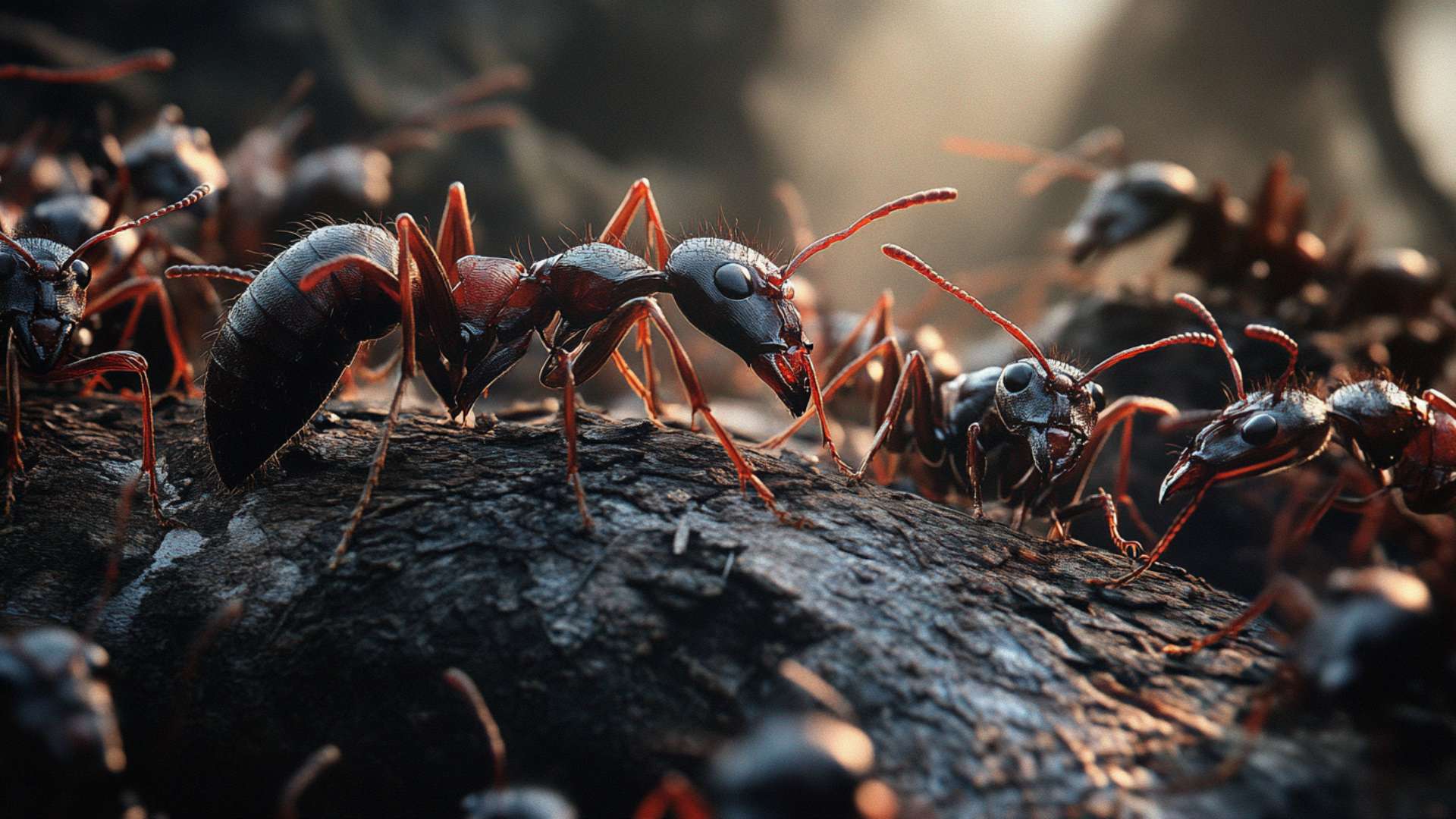Welcome to the vibrant desert oasis of Las Vegas, renowned for its glitz, glamour, and non-stop entertainment. This bustling city in Nevada is nestled within the Mojave Desert, characterized by its arid climate and unique flora and fauna.
While Las Vegas may be better known for its iconic resorts and dazzling nightlife, it’s intriguing to delve into the realm of nature within this desert metropolis. One question that piques curiosity is whether fire ants have made their way into the urban landscape of Las Vegas.
Brief Overview of Las Vegas as a Popular Desert City
Las Vegas, often referred to as the “Entertainment Capital of the World,” attracts millions of visitors each year with its vibrant casinos, world-class dining options, and dazzling performances. Situated in Clark County, Nevada, this city is surrounded by vast stretches of desert terrain that contain a myriad of unique ecosystems. The Mojave Desert encompasses much of southern Nevada and parts of California, Utah, and Arizona.
It is characterized by extreme temperatures ranging from scorching hot summers to chilly winters. Despite these harsh conditions, several resilient species have adapted to thrive in this arid environment.
When exploring the realm of ants found in Las Vegas, one cannot help but wonder whether fire ants have established their presence amidst the glimmering lights and bustling streets. Fire ants are notorious for their aggressive nature and painful sting which results in a burning sensation on contact with human skin. While several common types of ant species can be commonly found throughout Las Vegas homes or businesses—such as pavement ants, ghost ants, or argentine ants—it remains uncertain if fire ants have successfully formed colonies within this desert city’s boundaries.
Fire Ants: An Introduction

Fire ants, scientifically known as Solenopsis invicta, are notorious for their aggressive behavior and painful sting. These small insects belong to the family Formicidae and are commonly found in warm regions across the world. In appearance, fire ants typically measure between 1/8 to 1/4 inch in length, with a mostly dark brown to dark reddish brown to-brown coloration.
Their bodies are segmented into three parts – head, thorax, and abdomen – and they possess six legs like other ants. One distinctive feature of fire ants is their ability to deliver a potent sting using their venomous stingers found at the posterior end of their bodies.
When threatened or disturbed, these relentless creatures can latch onto an intruder’s skin with their mandibles and then repeatedly inject venom through painful stings. This defense mechanism makes them formidable adversaries.
Native Habitats and Distribution Across the United States
Originally native to South America, specifically Brazil and Argentina, fire ants were accidentally introduced to the United States in the early 20th century through shipping materials. Since then, they have rapidly spread across many states due to their adaptability to various habitats.
In terms of distribution within the United States, fire ants are most prevalent in the southeastern region where warm temperatures support their survival. However, they can also be found in areas as far north as Virginia and as west as California.
While Las Vegas falls within Nevada’s arid desert landscape rather than being part of fire ants’ traditional habitat range, it’s essential to explore whether these resilient insects have managed to establish a presence despite challenging conditions. The next sections will delve deeper into understanding if red imported fire ants and black ants may have indeed made Las Vegas their home or if they remain absent from this vibrant desert city.
Fire Ants in the Desert

Fire ants, known for their aggressive nature and painful stings, have managed to adapt remarkably well to survive in arid environments such as deserts. These resilient creatures possess a range of adaptations that allow them to thrive where other insects struggle. One notable adaptation is their ability to withstand extreme temperatures and scarcity of water.
The exoskeleton of fire ants serves as a protective barrier against dehydration, preventing excessive loss of moisture from their bodies. Additionally, fire ants have a unique social structure that enables them to efficiently forage for food even in harsh desert conditions.
They live in large colonies comprising thousands of individuals who work together as a highly organized unit. These social insects form complex tunnels deep into the soil, creating an underground network that helps maintain optimal temperature and humidity levels within the nest.
Factors That Influence Their Presence in Desert Regions
Despite their remarkable adaptations, the presence of fire ants in desert regions is not universal. Several factors influence whether they can establish successful populations in these arid environments.
One crucial factor is the availability of suitable food sources. Fire ants are omnivorous insects with a preference for protein-rich foods like insects and small arthropods, which tend to be more abundant in areas with diverse plant and animal life.
Moisture availability also plays a significant role in determining the presence of fire ant colonies within desert regions. While fire ants are adept at conserving water through various physiological mechanisms, they still require some level of moisture for survival and reproduction.
Areas with occasional rainfall or access to underground water sources provide more favorable conditions for these resilient pests. Furthermore, competition with other ant species can affect the distribution and establishment of fire ant colonies within desert regions.
Invasive species such as Argentine ants or pharaoh ants might outcompete fire ants for resources, limiting their presence in certain areas. Environmental factors like soil type, temperature fluctuations, and the presence of predator species also contribute to the complex dynamics of fire ant populations in desert regions.
Fire ants have developed remarkable adaptations to survive in arid environments such as deserts. Their ability to withstand extreme temperatures and conserve water enables them to establish successful colonies even in harsh conditions.
However, factors for common ants like food availability, moisture levels, competition with other common ants elsewhere, and environmental factors influence their distribution within desert regions. Understanding these influences is crucial for effective pest management strategies and ensuring a balanced ecosystem free from invasive species like fire ants.
Fire Ants in Nevada

Nevada, known for its vast deserts and arid landscapes, boasts a unique climate and ecosystem that greatly influence the presence of various species, including ants. With scorching summers and limited precipitation, the harsh conditions seem unlikely to support thriving insect populations.
However, nature always finds a way to adapt and survive even in the harshest of environments. The state’s climate is characterized by low humidity levels and extreme temperature fluctuations between day and night.
This dry environment poses challenges for most ants to establish colonies successfully. However, despite these inhospitable conditions, certain species of ghost ants have managed to carve out a niche in Nevada’s ecosystem.
Historical Records and Studies on Fire Ant Populations in Nevada: The Elusive Invader
When it comes to fire ants specifically, their presence in Nevada has been a topic of intrigue among scientists and residents alike. Historically, fire ants were primarily found in the southeastern United States before gradually expanding their range due to human activity.
However, their establishment in the arid landscapes of Nevada remains somewhat elusive. Limited historical records suggest sporadic sightings of fire ant colonies throughout different regions of Nevada over the years.
These sightings have prompted researchers to investigate the potential impact of fire ant populations on local ecosystems if they were to become established. Several studies have been conducted by entomologists and ecologists aiming to shed light on these enigmatic creatures’ presence in Nevada.
These studies often focus on analyzing factors such as soil moisture content, food availability, temperature tolerances, and competition with other ant species. By understanding these dynamics within Nevada’s unique ecosystem context, researchers hope to unravel the mystery surrounding fire ants’ potential colonization here.
As we delve deeper into understanding the presence or absence of fire ants within Las Vegas itself—the bustling heart of Nevada—we must explore the specific environmental factors that may attract or deter the infestation of these infamous insects. Join us in the upcoming section as we unravel the truth and uncover whether fire ants have infiltrated the vibrant streets and neighborhoods of Las Vegas or remain a distant threat on the horizon.
The Presence of Fire Ants in Las Vegas

When it comes to the presence of fire ants in urban areas like Las Vegas, several environmental factors come into play. These factors can either attract or deter fire ants from establishing colonies within the city.
One crucial element is the availability of food and water sources. Fire ants, like most ants, are attracted to sweet substances and protein-rich foods.
Therefore, areas with easily accessible garbage bins, spilled food, or improperly covered compost piles may create an appealing environment for these pests to nest. Moisture also plays a significant role in attracting fire ants.
While there are there fire ants in Las Vegas, Vegas is located in the arid desert region of Nevada, it doesn’t mean that these ants won’t seek out sources of moisture. Leaking pipes, poorly sealed irrigation systems, the ground, or even moisture accumulation around swimming pools can provide attractive conditions for fire ant colonies to thrive.
Reports, Sightings, and Anecdotal Evidence from Residents or Visitors

Although Las Vegas may not be widely known for its fire ant population compared to other regions across the United States, reports and sightings from residents and visitors suggest their occasional presence within city limits. Many people have encountered these pesky creatures while hiking in natural areas surrounding Las Vegas or during picnics at local parks.
Anecdotal evidence supports the notion that fire ants can establish nests around residential areas as well. Some residents have reported finding ghost ants in large colonies near their homes’ foundations or in garden beds where sufficient moisture was present.
A characteristic feature often described by those who have dealt with them directly is their aggressive nature when disturbed – a trait common among many species of fire ants. While these reports cannot be generalized as a widespread issue in Las Vegas, they do indicate that there is potential for localized populations of aggressive fire ants elsewhere within the city.
It is essential for residents and visitors to be aware of their presence and take necessary precautions to prevent infestations in their homes or public spaces. While fire ants may not be as common in Las Vegas as some other ant species, there have been reports and sightings indicating their occasional presence in certain areas.
Understanding the environmental factors that attract these ants, such as food sources and moisture, can help individuals take preventive measures. It is always advisable to monitor your surroundings carefully, seal any openings or cracks in structures, and promptly address any potential ant infestations to ensure a pest-free environment.
Potential Impacts and Concerns
If fire ants were to establish a population in Las Vegas, the potential ecological effects could be significant. Fire ants are known for forming large colonies, which can disrupt the native ecosystem. They are aggressive predators and compete with other ant species for resources, potentially leading to declines in local ant populations, including native species that play crucial roles in pollination and seed dispersal.
Additionally, fire ants have a notorious reputation for their ability to cause damage to plants and animals. They not only feast on small insects but also consume seeds and plant matter.
This voracious appetite can negatively impact vegetation diversity, affecting the balance of the ecosystem. Fire ants may also directly impact wildlife by preying on or outcompeting small vertebrates such as lizards, ground-nesting birds, or even small mammals.
Risks to Human Health and Safety

The presence of fire ants in urban areas poses risks to human health and safety. These ants possess a painful sting that can cause allergic reactions in some individuals.
While most people experience temporary discomfort from their stings, some may develop severe allergic reactions requiring medical attention. Moreover, fire ants are notorious for their aggressiveness when disturbed or threatened.
Their stings can be quite painful due to venom injection into the skin. Imagine accidentally stepping on a fire ant mound while enjoying a picnic at one of Las Vegas’ beautiful parks—it could quickly turn into an unpleasant experience!
Fire ants also pose risks to infrastructure as they are known for constructing extensive underground nests near structures or electrical equipment. If pavement ants are left unchecked, they may cause considerable structural damage either by excavating soil beneath pavements or damaging electrical systems.
To mitigate these potential impacts on both ecology and human well-being, it is crucial for authorities and residents alike in Las Vegas to remain vigilant and take appropriate measures to prevent the establishment of aggressive fire ants and ant populations in the city. This includes implementing effective pest control strategies and promoting awareness about the risks associated with fire ants.
Prevention, Control, and Management Strategies

Overview of methods used to prevent or control fire ant populations
Fire ants can be a persistent nuisance in many regions, but there are effective methods available to prevent and control their populations. One common approach is the use of bait products specifically designed for fire ants. These baits contain slow-acting insecticides that are carried back to the colony by worker ants, ultimately eliminating the entire colony.
This method is highly effective as it targets the entire population and disrupts their reproductive cycle. Another preventative measure is regular inspection and maintenance of your property.
Fire ants are opportunistic creatures, so eliminating potential nesting sites can go a long way in keeping them at bay. Trim bushes and trees away from your house, seal any cracks or crevices in the house, foundation, or walls where they could enter, and remove any debris that may serve as a potential nesting spot.
Local initiatives or programs aimed at managing invasive species
Las Vegas takes invasive species management seriously, including those pesky fire ants. The Nevada Department of Agriculture (NDA) has established robust programs to monitor and control invasive species throughout the state.
Their efforts include implementing regulations on imported wood and nursery stock to minimize the risk of introducing pests like fire ants into local wood and environments. Furthermore, NDA works closely with local pest control companies who provide comprehensive services to combat invasive species such as fire ants.
These professionals employ a range of techniques including targeted insecticide applications to eradicate existing colonies while also offering advice on prevention methods for homeowners. Collaborative efforts between residents and authorities are vital in maintaining control over fire ant populations in Las Vegas.
By reporting sightings promptly and following recommended prevention guidelines, individuals can contribute significantly to these initiatives aimed at preserving both public health and ecological balance within our communities. While fire ants may pose a challenge in Las Vegas, there are practical prevention and control strategies available to mitigate their impact.
By being proactive in keeping your property free from potential nesting sites and promptly reporting any signs of an ant infestation, you can play a crucial role in managing fire and ant infestation populations. Remember, a collaboration between residents, local initiatives, and professional pest control services is essential in maintaining a harmonious coexistence with these persistent insects.
Conclusion
Recapitulation of findings regarding the presence of fire ants in Las Vegas
Throughout this exploration, we have delved into the question of whether fire ants have made their presence known in the vibrant city of Las Vegas. After careful consideration and examination, it appears that fire ants are not commonly found in this desert metropolis.
While neighboring states like Arizona and California have reported infestations, there is limited evidence to suggest that Las Vegas is currently home to these notorious insects. Fire ants, known for their painful sting and heart-shaped abdomen, primarily thrive in more humid regions where their large colonies can establish themselves.
The arid climate and sandy soil prevalent in Las Vegas make moist areas of it an inhospitable habitat for these red imported fire ants. Therefore, residents and visitors alike can find solace in knowing that they are less likely to encounter these aggressive creatures during their time spent in Sin City.
Final thoughts on the importance of monitoring invasive species for environmental conservation
While the absence of fire ants may be a relief for those living or traveling in Las Vegas, it is crucial to emphasize the significance of monitoring invasive species for environmental conservation efforts. Invasive species, such as fire ants, can wreak havoc on ecosystems by displacing native flora and fauna and disrupting delicate ecological balances.
By staying vigilant and implementing effective pest control measures, we can protect our environment from potential invasive threats. It is essential for communities to collaborate with local authorities and organizations to ensure early detection and swift response when facing such challenges.
Remembering that prevention is key when preserving our precious natural habitats allows us to appreciate the intricate web of life while enjoying all that our diverse planet has to offer. Let us celebrate the absence of fire ants in Las Vegas while continuing our commitment towards safeguarding ecosystems from invasive species—an endeavor that ensures a harmonious coexistence between humans and nature.
Dissuade Ants with D-Termination: Las Vegas’ Top Pest Control Choice!

If you’re experiencing ant troubles, D-Termination is here to help. Our proficient team excels at discouraging ants, revitalizing cleanliness, and preserving the integrity of your surroundings. Bid farewell to ants—opt for D-Termination for effective pest control today!
Contact us at 702-919-6310 or visit dtermination.com to schedule your ant control service and reclaim your space from these unwanted pests.
Frequently Asked Questions:
Fire ants are not commonly found in Nevada.
The small red ants in Las Vegas are often a native species called the “red harvester ant.”
Las Vegas may have occasional ant issues, but it varies by location and time of year.
Fire ants typically have a reddish-brown color and deliver painful stings, unlike many other ant species in the area.








